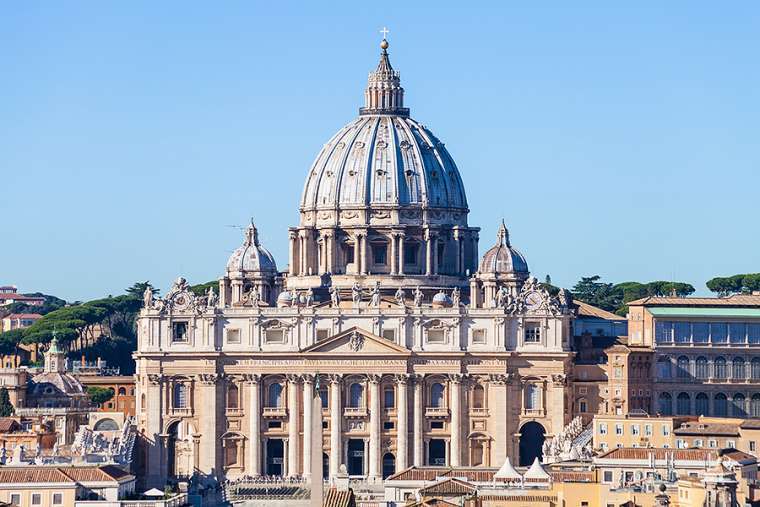St. Peter’s Basilica. / vvo/Shutterstock
After the Vatican Secretariat of State issued a decree on 12 March banning the practice of private Masses in the main church of St. Peter’s Basilica, questions remain about the manner in which it was promulgated, which was unusual for a document of its importance.
Starting 22 March, the document says, priests will be invited to take part in several concelebrated Masses at St. Peter’s every day, but will not be permitted to celebrate private Masses at the basilica’s many side altars.
The decree says the changes are intended to ensure “the Holy Masses in St. Peter’s Basilica take place in a climate of recollection and liturgical decency.”
Under the new protocols, groups of pilgrims, accompanied by a bishop or priest who has booked an altar, will still be permitted to celebrate private Masses in the grottos beneath the Church.
Mass offered in the extraordinary form of the Roman Rite will be limited to the Clementine Chapel in the Vatican Grotto under the new protocols.
Cardinal Raymond Burke, former prefect of the Church’s highest court, released a letter 13 March critiquing the decree’s “form and content,” saying that the Secretariat of State lacks the competent authority to issue directives regarding the offering of Mass at St. Peter’s.
As CNA has previously reported, the decree was released by the First Section of the Secretariat of State, an office normally in charge of all the Curial offices’ direction and coordination but typically not liturgical celebrations.
The letter from the Secretariat of State is not addressed to the Archpriest of St. Peter’s Basilica, who is in charge of the worship and pastoral activity of the basilica, but to Archbishop Mario Giordana, extraordinary commissioner of the Fabric of St. Peter.
The Fabric of St. Peter does not deal with liturgical celebrations in the Basilica, but is instead charged with its conservation and maintenance.
Despite the unusual nature of the decree, two Vatican officials who asked for anonymity have confirmed to CNA that the document is real. The Vatican has not publicly commented on the document.
Prior to the change, the 45 altars and 11 chapels in St. Peter’s Basilica have been used every morning by priests to celebrate their daily Mass. Many of them are Vatican officials who begin their day with the celebration.
Burke contended that the new decree “imposes concelebration” on priests wishing to celebrate Mass at the basilica, “in violation of his freedom to offer the Holy Mass individually.
Canon 902 of the Code of Canon Law states that priests “are completely free to celebrate the Eucharist individually…but not while a concelebration is taking place in the same church or oratory.” Despite the letter of Canon 902, the practice of many Masses celebrated at the same time in St. Peter’s was a longstanding tradition that predates the Code of Canon Law.
The general daily Mass schedule in St. Peter’s Basilica lists one Mass per hour from 9 a.m. to noon, in Italian, at the Altar of the Chair. There is another Mass in Italian at 8.30 a.m. at the altar of the Most Holy Sacrament, while every day at 5 p.m., there is a Mass in Latin.
On Sundays, there are five Masses celebrated in Italian and one in Latin.
The release of the letter was not accompanied by any kind of official Vatican communication, and it lacks a protocol number, a typical feature of communications of this type. Nor was the letter signed in full by Archbishop Edgar Pena Parra, who heads the First Section of the Secretariat of State, but instead included only his initials.
The decree was not entirely unforeseen. CNA reported in January discussions were taking place about whether to continue to allow private Masses at the Basilica.
Cardinal Angelo Comastri retired as the basilica’s archpriest on Feb. 20, and Pope Francis appointed Cardinal Mauro Gambetti as his replacement.
Source: CNA

